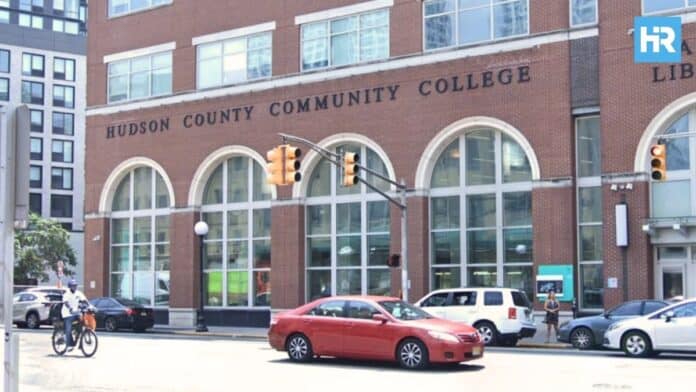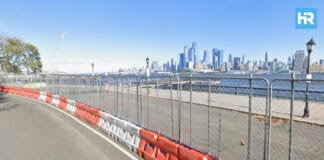Roulette has long been a centerpiece of casino culture, its spinning wheel symbolizing both the thrill of chance and the promise of calculated wagers.
Whether in an Atlantic City hall or a night spot beyond Hudson County, the game offers suspense and possibility. The appeal lies in the wheel itself as well as the strategies, etiquette, and choices players bring.
From single-zero wheels with stronger odds to rules that alter the mathematics, knowing how to approach roulette can shift an evening from quick losses to sustained entertainment. Understanding structure, risks, and differences among versions is the first step toward playing with confidence.
Versions, Rules, and House Edge: Exploring the Structure of Roulette
The foundation of understanding the best way to play roulette effectively begins with the various versions of the game itself.
Choosing between American, European, or French formats influences the house edge, available wagers, and even the rhythm of play. Subtle rule variations, such as La Partage or En Prison, can further determine how much value is retained when the ball lands on zero.
European, American, and French Variations
American roulette wheels feature both a single zero and a double zero, resulting in 38 outcomes and a 5.26 percent house edge.
European roulette features only a single zero, narrowing outcomes to 37 and reducing the edge to 2.70 percent.
French roulette often employs special rules when the ball lands on zero during even-money wagers, making European and French formats statistically more favorable.
French terminology can intimidate newcomers; however, it’s nothing to shy away from. La Partage lets players recover half their stake when zero appears on an even-money bet, while En Prison carries the wager over to the next spin. Both reduce expected losses, and clear layouts and rule signage help confirm which system is in place before sitting down.
Understanding Payouts and Verifying Rules
Regardless of the version, understanding how payouts work is crucial for making informed wagers. A straight-up bet pays 35 to 1, while a split returns 17 to 1, with other options like corner bets and dozens carrying their own ratios.
Reviewing the felt layout and the casino’s printed or digital information can prevent confusion once play begins. Because of this, many experienced gamblers recommend making a mental ‘Rule & Edge Card’ that compares the main versions side by side, highlighting differences in house advantage and standard payouts.
Being deliberate about this step avoids unnecessary surprises and ensures that the chosen wheel aligns with the player’s expectations. Having this practical awareness not only strengthens decision-making but also helps align strategy with realistic outcomes.
Smart Betting Approaches: Playing Outside Bets vs Inside Bets
Understanding the probabilities behind different wagers is a significant part of approaching roulette with purpose. While no wager can eliminate the house edge, selecting bets with steadier returns and avoiding those with disproportionate risk can extend playing time and create a more engaging session.
The most +EV (positive expected value), or least -EV (negative expected value), path lies in focusing on risk management, rather than chasing unlikely payouts.
Safer Options With Outside Bets
Outside bets cover broader portions of the wheel, such as red or black, odd or even, or larger groupings of numbers. Although these bets pay at even money or slightly higher, their higher probability of success makes them the most reliable choice for managing volatility.
Choosing these wagers reduces the variance that can quickly deplete a bankroll, especially during a short session. Many players seeking to explore what is the best roulette strategy in practical terms find that outside wagers provide both steadier action and a more sustainable experience.
The stability of outside bets has made them central to several structured systems.
For example, the James Bond roulette strategy relies heavily on covering the entire table to balance risk and reward. While no approach eliminates losses, broad wagering patterns help maintain engagement for longer stretches of play.
For players who prefer digital play, comparing platforms amongst the best online casinos can also help pinpoint environments with more straightforward rules and fairer return-to-player (RTP) rates.
Wagers to Approach With Caution
Inside bets, such as single numbers or splits, offer larger payouts, but significantly lower odds of success. Among the least favorable is the five-number bet found only on American wheels, which increases the house edge beyond the standard rate.
Avoiding common roulette mistakes often comes down to steering clear of this particular wager, as well as resisting the temptation to focus entirely on straight-up numbers without a plan.
For players who enjoy experimentation, inside bets can be layered into a broader session, but keeping them limited is key. The difference between a memorable casino night and a swift exit often lies in recognizing how frequently unlikely outcomes fail to appear.
Responsible selection of wagers reinforces the broader principle that roulette rewards those who balance risk and patience.
Systems and Strategies: Fact vs Fiction
The history of roulette is filled with attempts to outwit the wheel. From mathematical progressions to psychological tricks, players have long searched for a path that guarantees profit.
While these methods can add structure to a session, the house edge remains constant, making it vital to understand where strategies can inform play and where they can mislead.
Examining Classic Progressions
The Martingale Strategy explained involves doubling a wager after each loss to eventually recover all previous losses, plus a profit equal to the initial stake. In theory, this system seems practical, but in reality, table limits and bankroll restrictions make it highly risky.
The Fibonacci Roulette System, which uses the famous numerical sequence to structure bet sizes, reduces some of this risk by slowing escalation, though it still cannot eliminate the house advantage.
Variations such as the D’Alembert strategy or the James Bond roulette strategy each introduce their own patterns, but all remain subject to the same mathematical boundaries.
Answering the question, “Does any roulette strategy actually work?” is central to analyzing these systems.
The short answer is that no strategy can consistently overcome the built-in edge. What these progressions do provide, however, is a framework for pacing wagers and managing emotional swings. For many, that structure can be more important than the illusion of beating the wheel.
Speed, Variants, and Modern Twists
Today’s roulette formats extend beyond the traditional table. Live dealer games replicate the physical experience, while random number generator versions move more quickly and can magnify long-term expected losses due to faster play.
Multiplier-based titles, often modeled after game-show styles, add bursts of excitement by offering boosted payouts on select numbers. These variants shift the volatility curve, creating higher highs but usually lower overall returns.
Exploring new versions highlights the importance of context. Some players may value the entertainment of flashy animations, while others prefer traditional wheels that offer clearer rules.
For those evaluating digital platforms, considering alternatives like the best offshore casinos can help identify environments that offer roulette variants and table conditions that align with personal preferences.
Bankroll and Session Management: Tips for Managing Your Bankroll
Even with careful bet selection and an understanding of strategy systems, roulette demands discipline.
Bankroll management determines how long a session lasts, as well as how enjoyable the experience feels. Establishing limits and sticking to them is the most reliable way to manage volatility and avoid unnecessary stress.
Structuring Bets and Bankroll
Determining wager size relative to total bankroll lays the groundwork for steady play. Many risk only a small share of the balance per spin, often 1 to 5 percent. This conservative method allows for streaks without draining funds too quickly.
Systems like the D’Alembert strategy emphasize gradual bet adjustments over extreme swings.
A structured plan supports sustainability; without it, players often chase losses or quit too soon. Aligning play with financial boundaries helps avoid one of the most common roulette mistakes: wagering recklessly without a concrete approach.
Setting Session Goals and Timeouts
Another critical element of roulette discipline involves defining session goals before playing. Establishing a stop-loss amount helps prevent damaging downturns, while setting a stop-win target can lock in profits and avoid overextension.
Adding a planned timeout ensures mental clarity, especially in fast-paced environments where consecutive spins may cloud judgment.
These principles are as valuable online as they are in physical casinos. Digital operators offer multiple table formats, and reviewing platforms such as no-KYC casinos can reveal where withdrawal processes and table limits support effective bankroll management.
Choosing settings that encourage discipline transforms roulette from a short-lived gamble into an experience of sustained engagement.
Table Experience and Etiquette: Choosing the Right Roulette Table
Roulette may be a game of numbers, but the atmosphere at the table shapes the overall experience. From the clarity of posted rules to the pace of the dealer, practical choices about where and how to sit down matter.
Etiquette also plays a role in ensuring a respectful and enjoyable environment for everyone involved.
Practical Selection Factors
Before settling at a table, verifying the posted rules and payout structures is essential. Casinos often provide layouts that detail whether La Partage or En Prison rules are in effect, along with the minimum and maximum betting limits.
Choosing the right roulette table can also depend on whether it is a single-zero or double-zero format, as the house edge varies accordingly.
For online players, these same principles apply. Table selection tools allow filtering by limit, wheel variation, or rule set. Some platforms even provide side-by-side comparisons of different roulette versions, making it easier to align play with long-term goals.
Reviewing options, such as the best sweepstakes casinos, can give additional perspective on digital environments that emphasize both fair play and accessible wagering structures.
Etiquette and Shared Play
Respecting table etiquette enhances the overall enjoyment of the roulette experience. Waiting until the dealer signals the end of betting before placing chips, refraining from interfering with other players’ wagers, and handling chips appropriately are all key aspects.
Even in online settings, similar courtesies are observed, such as refraining from disruptive chat behavior during live dealer sessions.
Etiquette is less about formality and more about sustaining the rhythm of the game. Adhering to it ensures smoother gameplay, helps maintain the dealer’s focus, and creates a positive atmosphere that reflects the traditions of casino culture.
When combined with thoughtful table selection, etiquette helps make roulette a balanced experience of strategy, chance, and social interaction.
Taking Advantage of the Best Way to Play Roulette
Roulette remains a game where structure, awareness, and discipline guide the experience more than luck.
Understanding wheel variations, applying practical betting strategies, recognizing the limitations of strategy systems, and managing bankroll decisions all support a more informed approach to play. Attention to etiquette and table selection completes the foundation, elevating casino nights beyond just Hudson County.
Roulette continues to evolve as both physical and digital venues introduce new formats and technologies.
Staying informed ensures that players adapt and enjoy the game in ways that align with their goals. Being aware of updates on the best way to play roulette is essential as new insights continue to emerge.
















